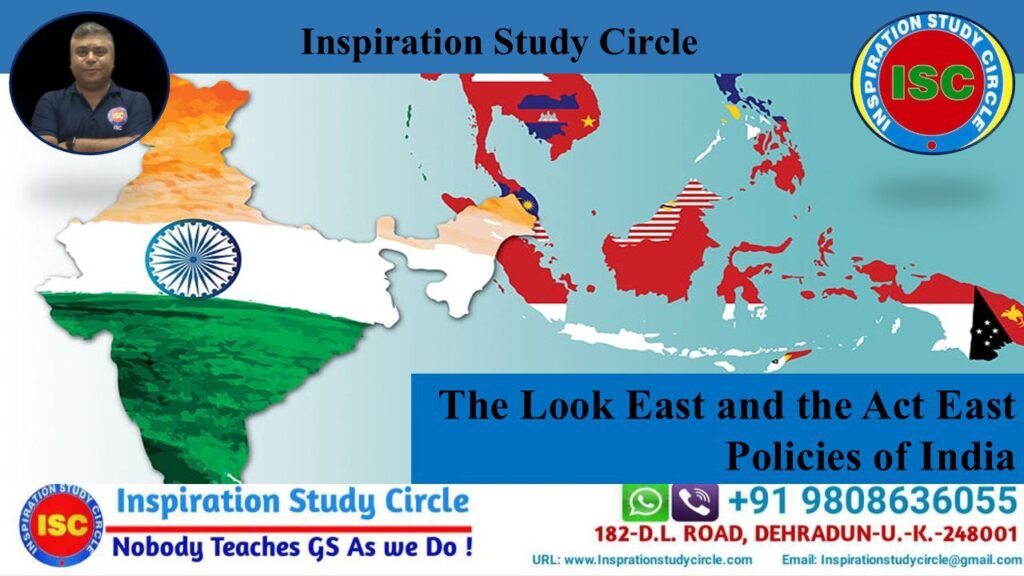
The Viksit Bharat – Guarantee for Rozgar and Ajeevika Mission (Gramin) Bill, 2025
The Viksit Bharat – Guarantee for Rozgar and Ajeevika Mission (Gramin) Bill, 2025 Table of Contents The Viksit Bharat – Guarantee

The contemporary Look East policy, conceived, conceptualized, and implemented in the early 1990s first by former Prime Minister P.V. Narasimha Rao in the immediate aftermath of the end of the Cold War and the context of the extraordinary domestic economic challenges confronting the country, had its contextual rationale, imperative and compulsion. Since then, in the last nearly two decades, it has evolved and acquired its momentum and, arguably, critical mass to give it a new and greater meaning, relevance, depth, and content in the changing context of geopolitics and globalization.
The Look East policy was conceived initially concerning South East Asia. It started with India becoming a sectoral dialogue partner of ASEAN, the Association of South East Asian Nations. The policy was later expanded to include East Asia and Oceania.
India has powerful cultural links with South East Asia, going back to antiquity. The folklore of the eastern coastal states of India is replete with stories of travels to bountiful countries in the east. The temples and monasteries of Angkor Vat in Cambodia, Borobudur in Indonesia, Champa kingdom in Vietnam, and the Shwedagon in Myanmar, to name just a few, are standing testimonies to the strong ties that have existed between India and this region. Suvannabhumi, the golden land, is a term frequently used for this region. To the people of this region India was the land of the middle path, the path shown by the Buddha.
Goals: The LEP was created to counter China’s influence and to forge ties with the US and its Southeast Asian allies.
Achievements: The LEP has strengthened India’s political, economic, and cultural ties with Southeast Asia and the Pacific. India’s trade with Southeast Asia has grown significantly, from $2.9 billion in 1993 to $80 billion in 2018.
ASEAN: India joined ASEAN in 1992 as a sectoral dialogue partner, and became a Summit-level Partner in 2002.
Implementation: The North Eastern Region of India is considered favorable for implementing the LEP because it’s a gateway to Southeast Asia. The Ministry of Road Transport & Highways has undertaken several major National Highway development projects in the region.
In 2014, India launched the Act East Policy, which was originally conceived as an economic initiative but has since gained political, strategic, and cultural dimensions.
The Act East policy is an effort by the Government of India to cultivate extensive economic and strategic relations with the nations of Southeast Asia to bolster its standing as a regional power and a counterweight to the strategic influence of the People’s Republic of China.
Initiated in 1991 as the Look East policy during the government of Prime Minister Narsimha Rao (1991–1996), it marked a strategic shift in India’s perspective of the world. It was rigorously pursued by the successive administrations of Atal Bihari Vajpayee (1998–2004) and Manmohan Singh (2004–2014).
In 2014, Prime Minister Narendra Modi‘s administration announced the action-oriented, project- and outcome-based Act East Policy as a successor to the Look East Policy, emphasizing a more proactive role for India.
Under the Act East Policy, India aims to foster economic cooperation, enhance connectivity, and promote cultural exchanges with countries in the Asia-Pacific region. This policy also focuses on expanding India’s strategic presence in the region to counterbalance China’s influence.
Overall, the Act East Policy reflects India’s aspiration to play a more significant role in the Asia-Pacific region and to contribute to regional peace, stability, and prosperity.
These Look East Policy alterations improved strategic partnerships with the Philippines, Malaysia, and Vietnam to counter Chinese dominance in both the South China Sea and the Indian Ocean. On net, the Act East Policy is a departure from India’s previous non-alignment and equidistance positions, and a move toward infrastructure-based “soft power”.
The “Look East Policy” and the “Act East Policy” are both key components of India’s foreign policy, focusing on engaging with countries in East and Southeast Asia. However, there are some key differences between the two:
By focusing on these areas and continuing to strengthen partnerships with countries in East and Southeast Asia, India can further advance its Act East Policy and contribute to regional peace, stability, and prosperity.
Disclaimer: The above article is based on various sources: Indian Express and Wikipedia

The Viksit Bharat – Guarantee for Rozgar and Ajeevika Mission (Gramin) Bill, 2025 Table of Contents The Viksit Bharat – Guarantee

How to Prepare for UKPCS 2026 in Six Months Table of Contents ISC- How to Prepare for UKPCS 2026 in

UKPSC Upper and Lower PCS Combined Batch for 2026-2027 Table of Contents Unlocking Uttarakhand’s Civil Services: The Power of UKPCS

Explained: Russian President Vladimir Putin’s State Visit to India Table of Contents Russian President Vladimir Putin conducted a state visit

UPPSC Upper PCS 2025: Mains Test Series and Answer Writing Table of Contents Inspiration Study Circle- Dehradun The UPPSC PCS

The Sanchar Saathi App Table of Contents The Sanchar Saathi app is a security and user-protection platform developed by India’s Department of Telecommunications (DoT) to help users manage mobile connections, report fraud, and locate lost phones